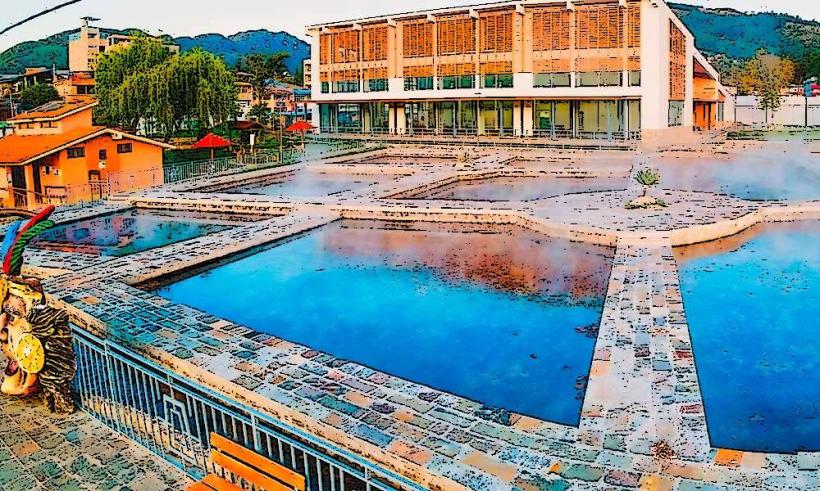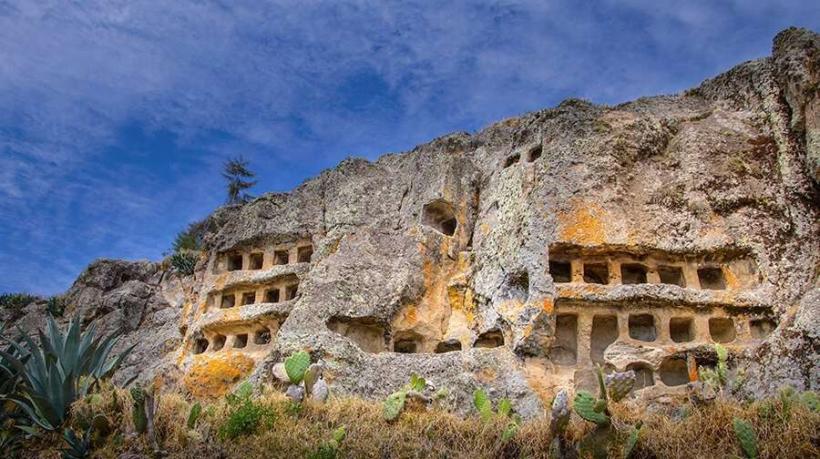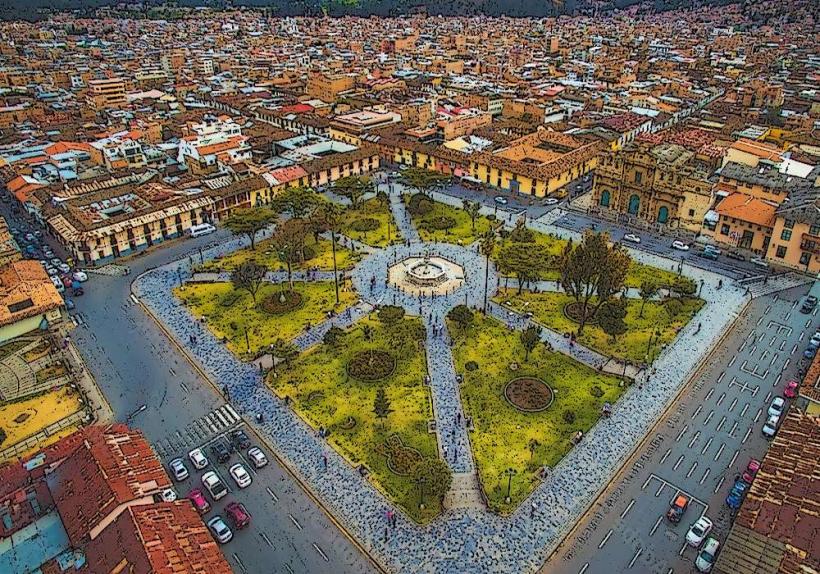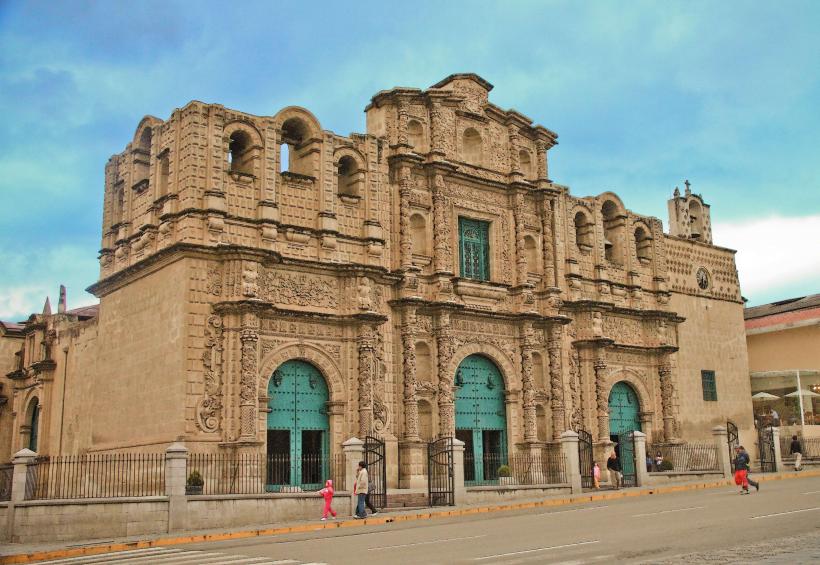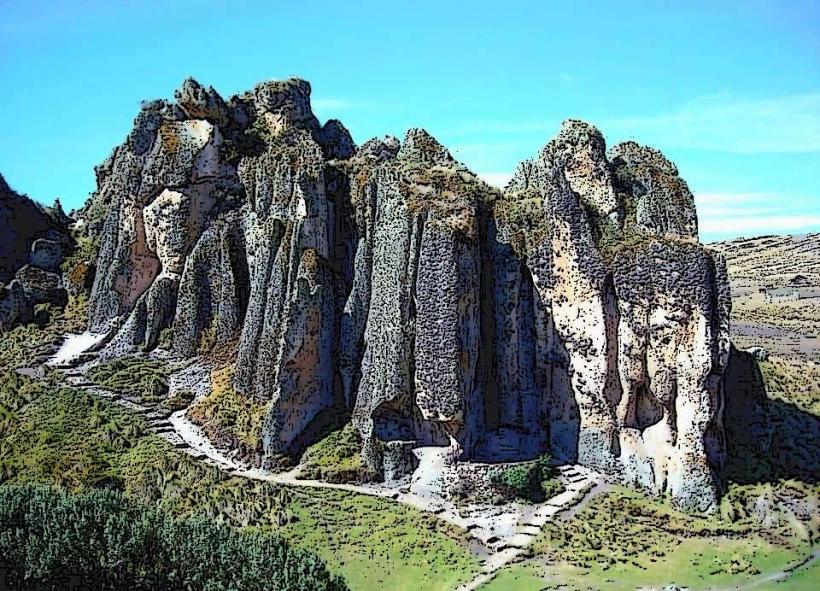Information
Landmark: Ransom Room (Cuarto del Rescate)City: Cajamarca
Country: Peru
Continent: South America
The Ransom Room (Spanish: Cuarto del Rescate) is one of the most significant historical sites in Cajamarca, Peru, and it plays a crucial role in the story of the Spanish conquest of the Inca Empire. The room is famous for being the location where Inca Emperor Atahualpa was held captive by Francisco Pizarro and his men in 1532. It is also the site of one of the most dramatic and pivotal moments in Peruvian and South American history.
Historical Significance
- Atahualpa’s Capture: The Cuarto del Rescate is most notable for being the place where Atahualpa, the last emperor of the Inca Empire, was held by the Spanish conquistadors. After the Battle of Cajamarca, Atahualpa was taken prisoner by Pizarro, despite initially offering to pay a massive ransom to secure his release.
- The Ransom: Atahualpa offered to fill a room with gold and silver as a ransom for his freedom. According to the account, the Inca emperor promised to provide enough treasure to fill a room that was 7 meters long, 5 meters wide, and 2.5 meters high (approximately 23 x 16 x 8 feet). The ransom was said to have been filled with gold and silver objects, which were brought to the room by the Inca people.
- Betrayal and Execution: Despite receiving the ransom, the Spanish did not honor their agreement and ultimately executed Atahualpa on August 29, 1533, after he was baptized as a Christian. This event marked the end of the Inca Empire and the beginning of Spanish colonial rule over the region.
The Room and Its Features
- Location: The Ransom Room is located in the Plaza de Armas of Cajamarca, inside the former residence of the Spanish conquistadors. Today, the room is part of a museum that is open to the public and serves as a reminder of this crucial chapter in South American history.
- Architectural Details: The room itself is a simple, unadorned stone chamber with thick walls. It is believed that the room’s modest appearance is reflective of the Inca design traditions, though the structure was adapted by the Spanish colonizers.
- Artifacts and Displays: Inside the room, visitors can see historical displays and reproductions of the objects that were said to have filled the ransom room, including gold and silver items from the Inca Empire. Additionally, information panels provide context about the events that took place here and the larger context of the Spanish conquest.
- Symbolism: The room symbolizes both the power and fragility of the Inca Empire at the time of its conquest. It is also a testament to the greed and betrayal that marked the Spanish encounter with the Incas.
Visiting the Ransom Room
1. Opening Hours
- The Ransom Room is part of the Historical Monument of Cajamarca, which is generally open to the public every day from 9:00 AM to 5:00 PM. It is advisable to check for updates on hours and availability, especially on holidays or during special events.
2. Admission
- There is a small entrance fee for visiting the Ransom Room. The museum is usually included in the general ticket for Plaza de Armas and surrounding attractions, though separate tickets may be required for special exhibits or guided tours.
3. Guided Tours
- Guided tours are available at the Ransom Room, and these tours provide in-depth information about the historical events that took place here. Guides often explain the historical significance of the room, the role of Atahualpa in the Spanish conquest, and the ransom itself, offering visitors a deeper understanding of the events.
4. Nearby Attractions
- Plaza de Armas: The Ransom Room is located in the Plaza de Armas, which is surrounded by significant colonial architecture, including the Cajamarca Cathedral and the Government Palace.
- Baños del Inca: Just a short distance from Cajamarca, the Baños del Inca (Inca Baths) offer a historical and relaxing experience at the hot springs used by the Incas, including Atahualpa.
- Ventanillas de Otuzco: Another historical site near Cajamarca, Ventanillas de Otuzco features rock-cut tombs from the pre-Inca Cajamarca culture, providing further historical context to the region.
Why Visit the Ransom Room?
1. Historical Insight
- Visiting the Ransom Room allows you to walk in the footsteps of Atahualpa, the last emperor of the Inca Empire. It offers a powerful connection to the momentous events of the Spanish conquest and the dramatic fall of the Inca Empire.
2. Cultural Significance
- The Ransom Room is a symbol of colonialism, betrayal, and the clash of two very different worlds. It serves as a reflection on the interactions between the Inca civilization and Spanish invaders.
3. Educational Experience
- The Ransom Room is an excellent place to learn about the Spanish conquest, the Inca Empire, and the historical legacy of these events in South American history. It is an important site for students of history, archaeology, and cultural studies.
Why Is the Ransom Room Important?
The Ransom Room is not just a historical site; it is a symbol of the end of the Inca Empire and the beginning of the Spanish colonial era in the Andes. It represents the profound transformation of the region from a flourishing civilization to a colonial subject of Spain. For those interested in Peruvian history, the Ransom Room is an essential destination to understand the historical dynamics that shaped modern Peru and South America.

